Abstract
A comparison was made of 134Cs and 137Cs contamination in fungi from eastern Europe and eastern North America. Mean activities of 25 Ukrainian, 6 Swedish, and 10 North American collections were 4,660, 9,750, and 205 Bq/kg (dry weight), respectively. Additional measurements were made on samples from the Moscow, southern Belarus, and Yugoslavia/Bulgaria regions. Activity values were found to vary by several orders of magnitude within all geographic areas, even for the same mushroom species. Significantly higher specific activities were observed in mycorrhizal species than in saprophytic and parasitic fungi. Unfortunately, many of the European mycorrhizal species considered as prized edibles contained unacceptably high levels of 137Cs (> 1,000 Bq/kg [dry weight]) and should be used sparingly as food. By contrast, no mushrooms collected in Ontario or northern Michigan exceeded 1,000 Bq of 137Cs per kg (dry weight). The excessive 137Cs contamination was evident in mushrooms from areas that had substantial fallout from the 1986 accident in reactor 4 at the Chernobyl nuclear power station. However, observations suggest that about 20% of the 137Cs in eastern Europe (Moscow area, Belarus, and Ukraine) is of non-Chernobyl origin.
Full text
PDF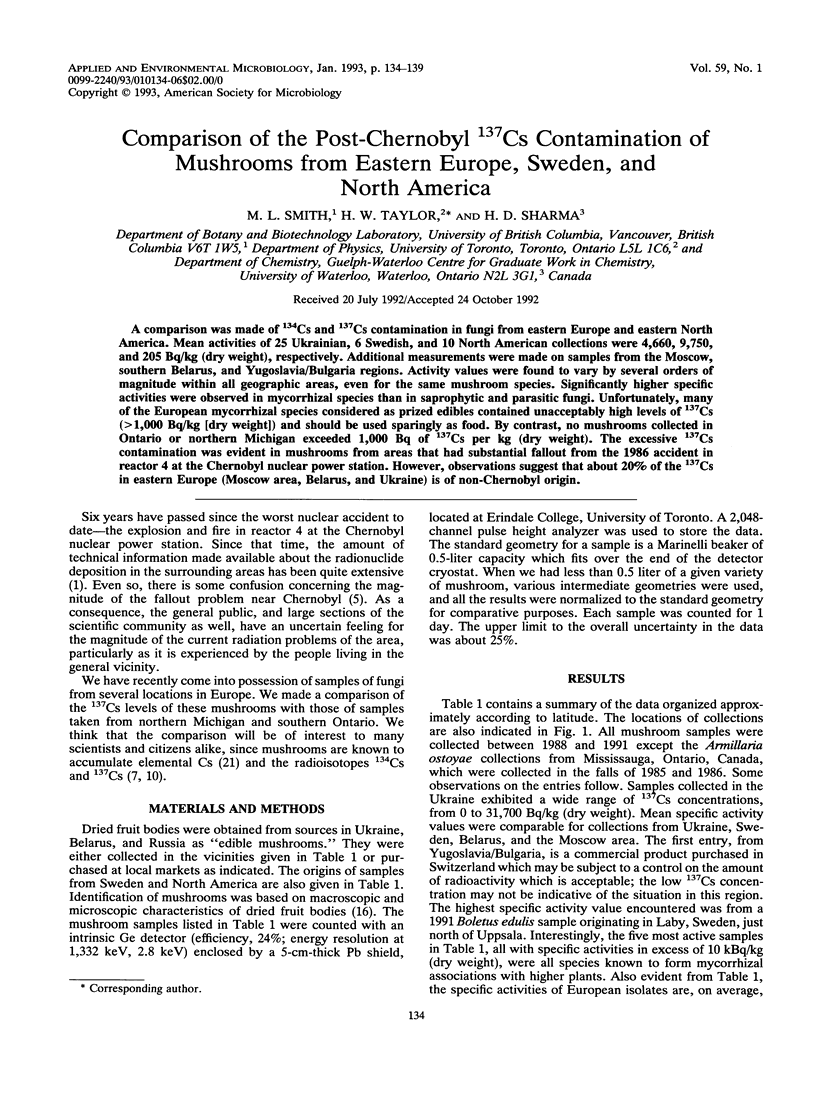
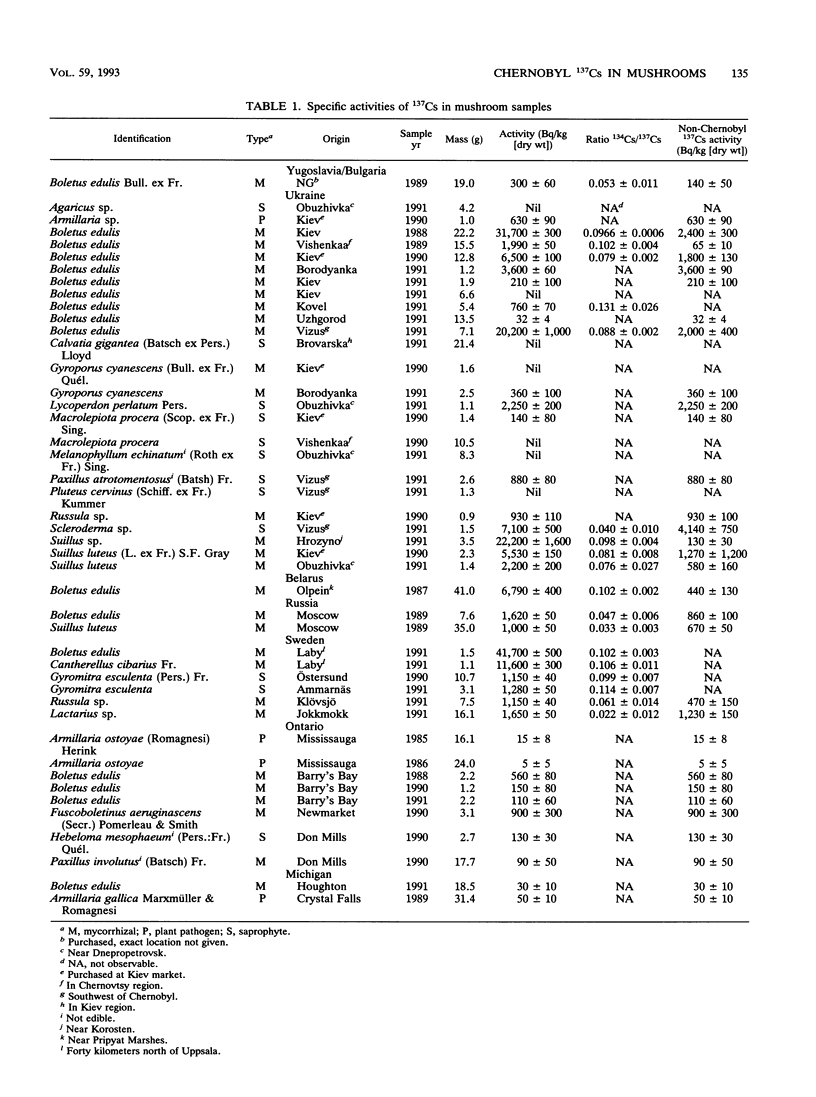
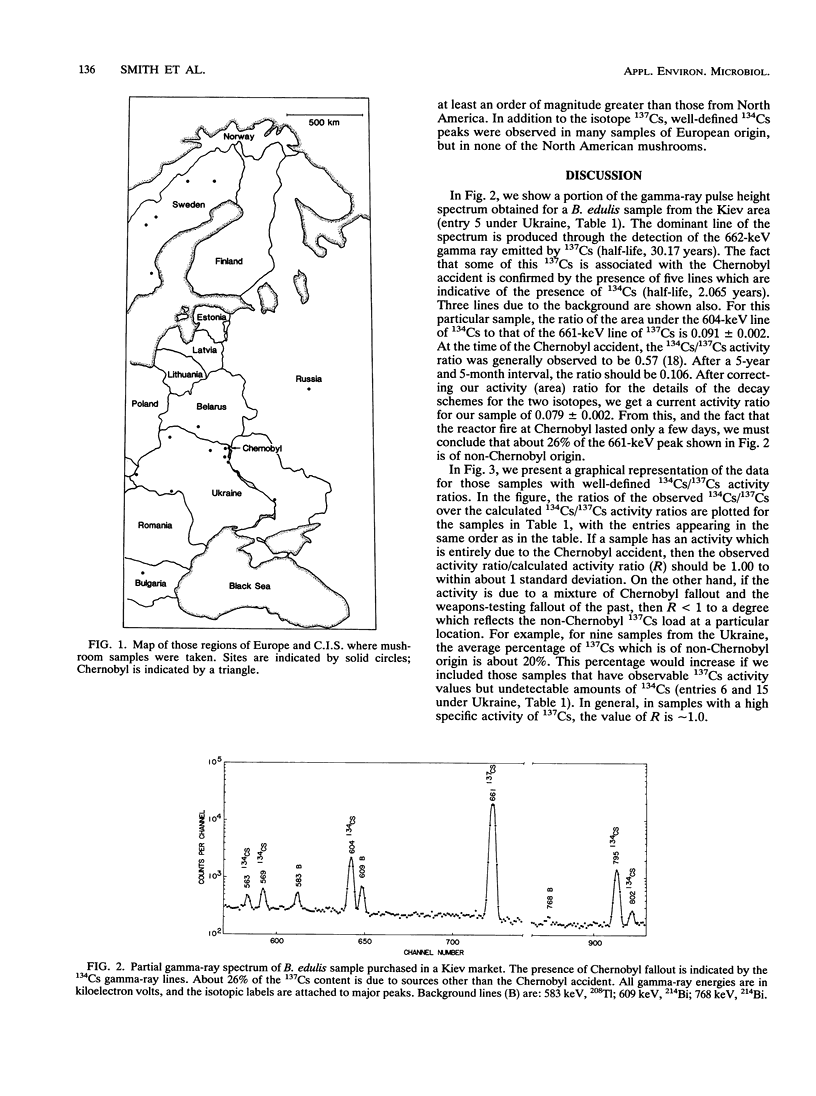
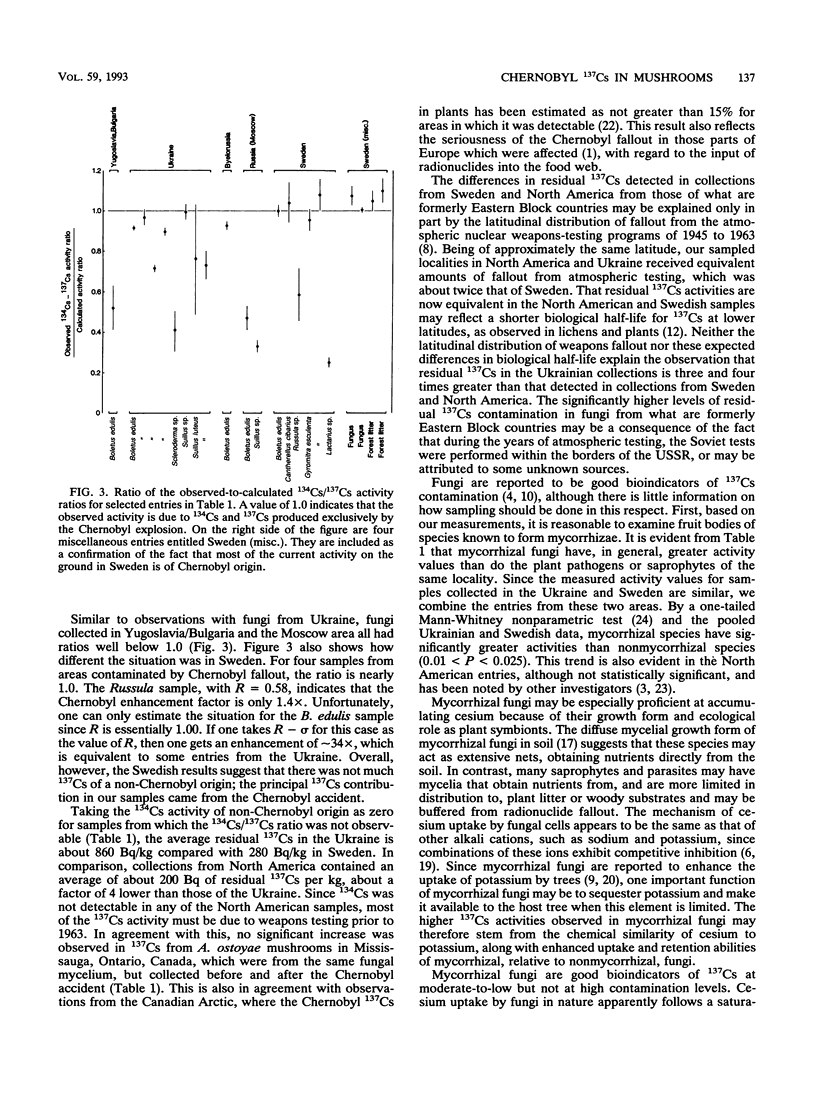
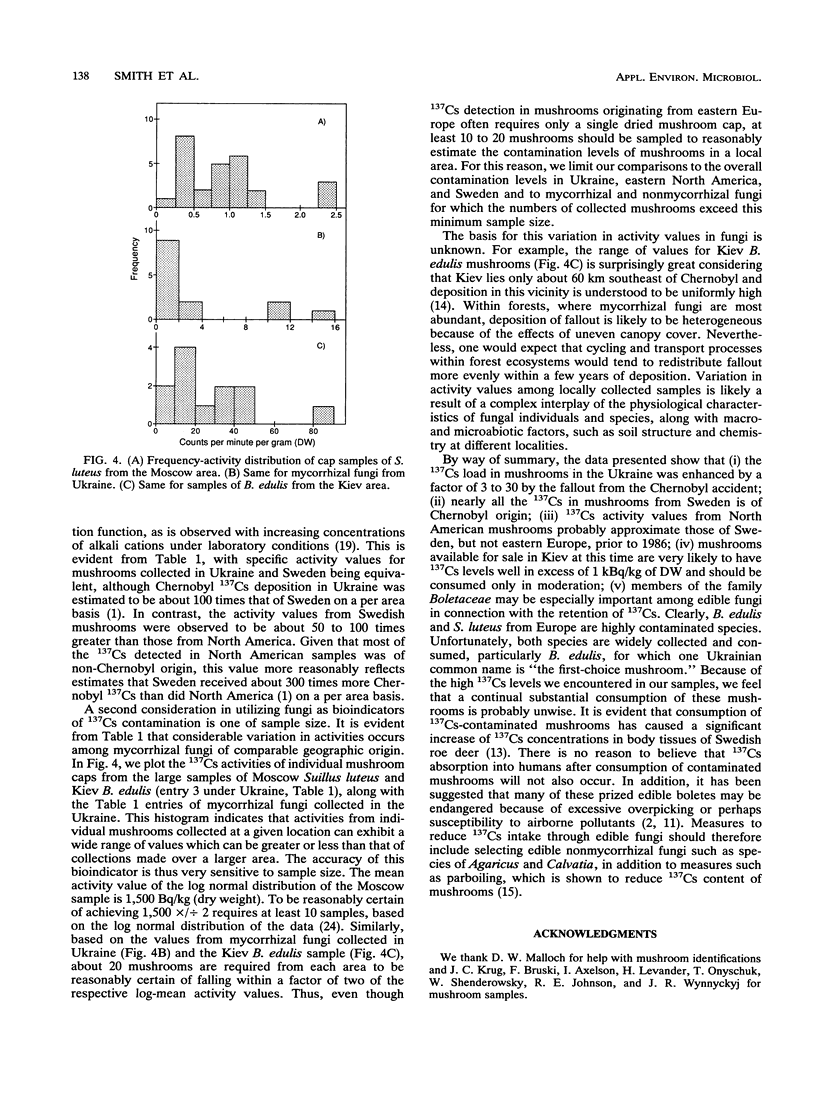
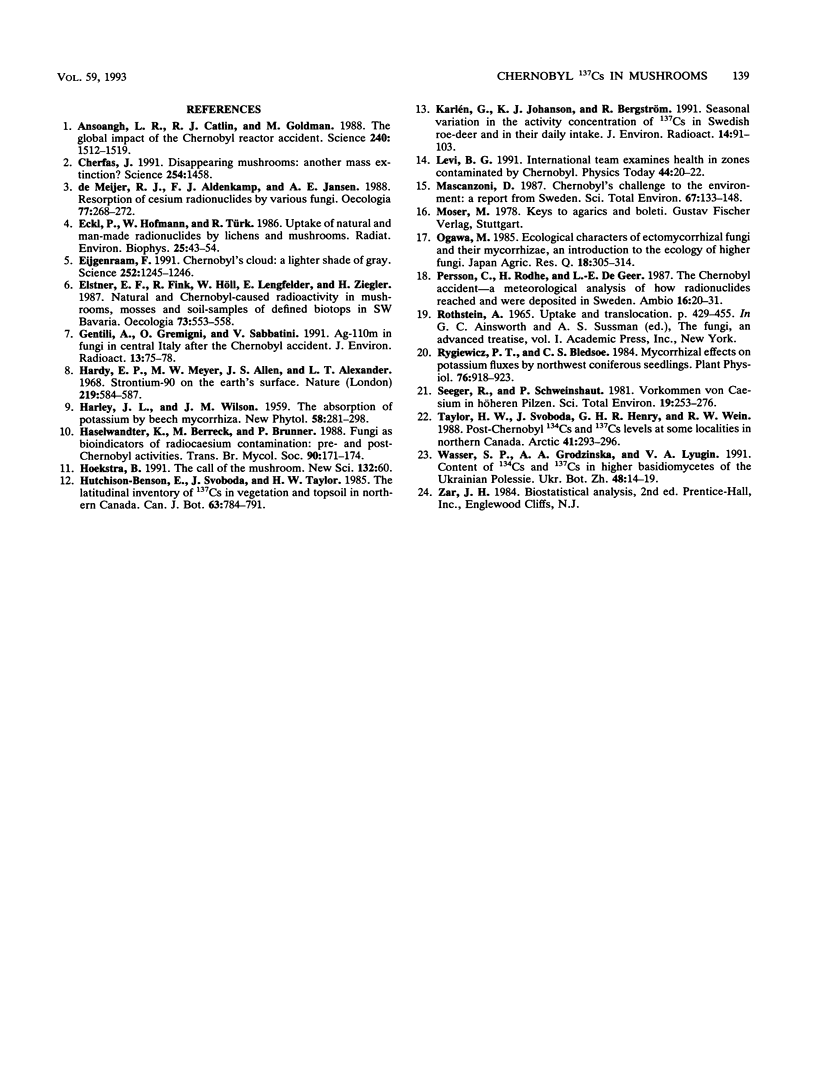
Selected References
These references are in PubMed. This may not be the complete list of references from this article.
- Anspaugh L. R., Catlin R. J., Goldman M. The global impact of the Chernobyl reactor accident. Science. 1988 Dec 16;242(4885):1513–1519. doi: 10.1126/science.3201240. [DOI] [PubMed] [Google Scholar]
- Cherfas J. Disappearing mushrooms: another mass extinction? Science. 1991 Dec 6;254(5037):1458–1458. doi: 10.1126/science.254.5037.1458. [DOI] [PubMed] [Google Scholar]
- Eckl P., Hofmann W., Türk R. Uptake of natural and man-made radionuclides by lichens and mushrooms. Radiat Environ Biophys. 1986;25(1):43–54. doi: 10.1007/BF01209684. [DOI] [PubMed] [Google Scholar]
- Eijgenraam F. Chernobyl's cloud: a lighter shade of gray. Science. 1991 May 31;252(5010):1245–1246. doi: 10.1126/science.1925534. [DOI] [PubMed] [Google Scholar]
- Hardy E. P., Meyer M. W., Allen J. S., Alexander L. T. Strontium-90 on the Earth's surface. Nature. 1968 Aug 10;219(5154):584–587. doi: 10.1038/219584a0. [DOI] [PubMed] [Google Scholar]
- Jansen J. A., de Groot K. Guinea pig and rabbit model for the histological evaluation of permanent percutaneous implants. Biomaterials. 1988 May;9(3):268–272. doi: 10.1016/0142-9612(88)90096-8. [DOI] [PubMed] [Google Scholar]
- Mascanzoni D. Chernobyl's challenge to the environment: a report from Sweden. Sci Total Environ. 1987 Dec;67(2-3):133–148. doi: 10.1016/0048-9697(87)90206-3. [DOI] [PubMed] [Google Scholar]
- Rygiewicz P. T., Bledsoe C. S. Mycorrhizal effects on potassium fluxes by northwest coniferous seedlings. Plant Physiol. 1984 Dec;76(4):918–923. doi: 10.1104/pp.76.4.918. [DOI] [PMC free article] [PubMed] [Google Scholar]


